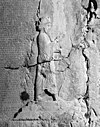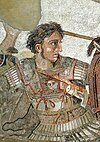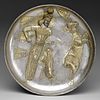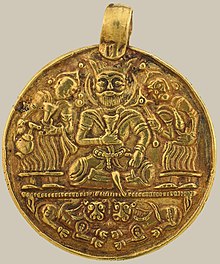Portal:Iran/Selected biography
historical reference. . Either the page is no longer relevant or consensus on its purpose has become unclear. To revive discussion, seek broader input via a forum such as the village pump |
| Note: Biographical articles now display at the Recognized content and Selected articles sections of the main portal page. |
Selected biographies list
Selected biography 1
Portal:Iran/Selected biography/1
Abuʾl-Ḥasan al-Qāsim Aḥmad ibn Ḥasan Maymandī (died 31 December 1032), better known as
Selected biography 2
Portal:Iran/Selected biography/2
Tiridates I was King of Armenia beginning in 53 and the founder of the Arsacid dynasty of Armenia. The dates of his birth and death are unknown. His early reign was marked by a brief interruption towards the end of the year 54 and a much longer one from 58 to 63. In an agreement to resolve the Roman–Parthian conflict in and over Armenia, Tiridates I (one of the brothers of Vologases I of Parthia) was crowned king of Armenia by the Roman emperor Nero in 66; in the future, the king of Armenia was to be a Parthian prince, but his appointment required approval from the Romans. Even though this made Armenia a client kingdom, various contemporary Roman sources thought that Nero had de facto ceded Armenia to the Parthian Empire. In addition to being a king, Tiridates I was also a Zoroastrian priest and was accompanied by other magi on his journey to Rome in 66. In the early 20th century, Franz Cumont speculated that Tiridates was instrumental in the development of Mithraism which ultimately became the main religion of the Roman Army and spread across the whole empire. Furthermore, during his reign, he started reforming the administrative structure of Armenia, a reform which was continued by his successors, and which brought many Iranian customs and offices into it. Tiridates I is one of the principal characters in George Frideric Handel's opera Radamisto and Reinhard Keiser's opera Octavia.Selected biography 3
Portal:Iran/Selected biography/3
Selected biography 4
Portal:Iran/Selected biography/4
Selected biography 5
Portal:Iran/Selected biography/5
Selected biography 6
Portal:Iran/Selected biography/6
Selected biography 7
Portal:Iran/Selected biography/7
Selected biography 8
Selected biography 9
Portal:Iran/Selected biography/9
The son of
Usage
The layout design for these subpages is at Portal:Iran/Selected biography/Layout.
- Add a new Selected article to the next available subpage.
- The list should only contain articles that have been given a quality rating of Good article-class, or higher.
- All blurbs should have an accompanying free-use image that is relevant to the selected article.
- The list should only contain articles that have been given a quality rating of
- The "blurb" for all selected articles should be approximately 10 lines, for appropriate formatting in the portal main page.
- Update "max=" to new total for its {{Random portal component}} on the main page.
Additions
- Adding articles
- Feel free to add WP:GAarticles to the above list.
- See also Iran articles by quality
- If you are unsure or do not know how to add an entry, feel free to post a question, suggestion or nomination here below, or at the talk page Portal talk:Iran.







